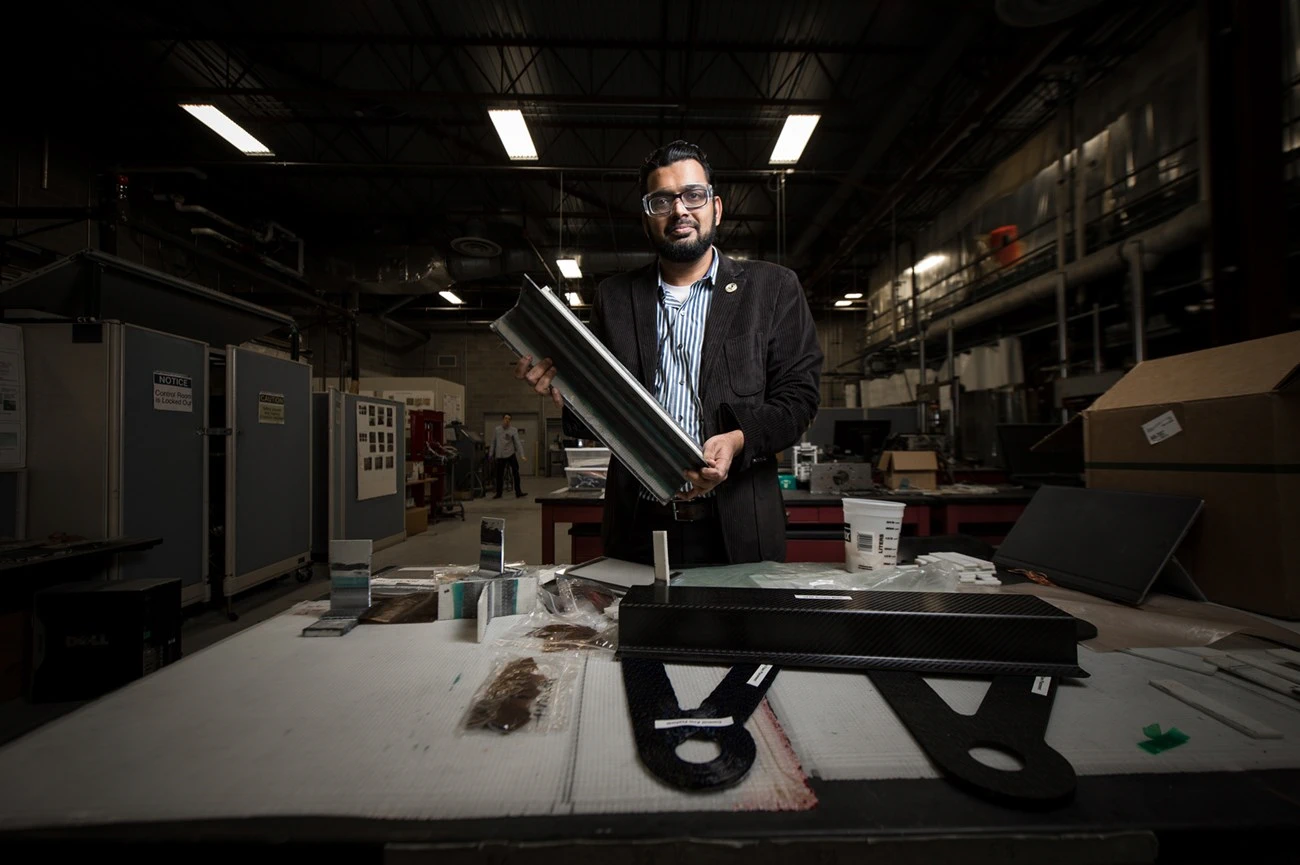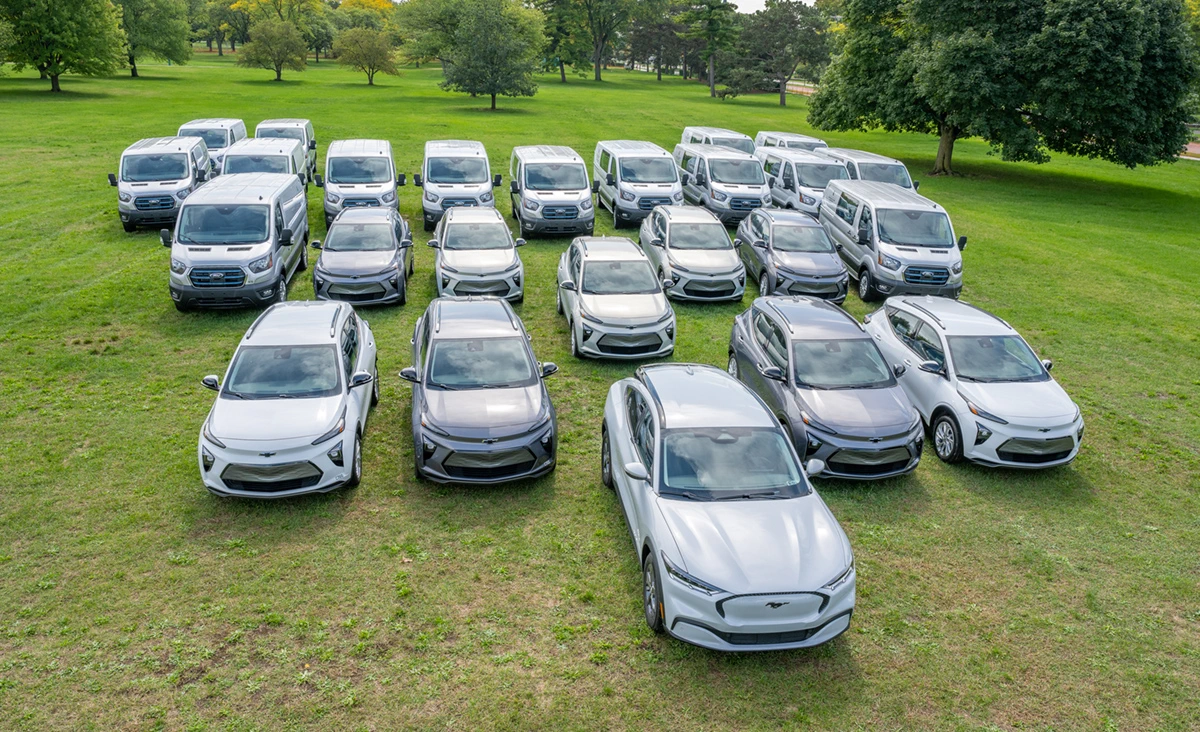Making composites worth their weight (reduction)
Mahmood Haq of Michigan State University has been interested in “lightweighting” vehicles since before EVs took off.
Haq is the director of the Composite Vehicle Research Center, or CVRC, at MSU, which was established in 2006. He’s been around for most of its existence, earning his master’s degree in 2007 from MSU, then staying here to earn his doctorate and start his faculty career.

In addition to roles as director and associate professor in the Department of Civil and Environmental Engineering, Haq also has appointments in the Department of Mechanical Engineering, the Department of Electrical and Computer Engineering and the Department of Chemical Engineering and Materials Science.
Working with the CVRC and its stakeholders — a list that has long included the U.S. Army as well as numerous companies over the years — he has a unique appreciation for how interconnected weight and performance are. MSU and the U.S. Army announced a new $9 million initiative in July to make electric autonomous vehicles safer, smarter and more dependable.
He knows that reducing the weight of a vehicle with an internal combustion engine by 10% can provide a 6% to 8% boost in fuel economy. When asked if drivers could expect similar figures to apply to the weight and range of electric vehicles, he pauses and thinks.
He hasn’t seen anyone officially crunch the numbers, he says, but he believes they would be similar. But the question doesn’t capture the full scope of lightweighting’s unique potential in EVs.
“For whatever weight you reduce, you increase the range, or you can also add more batteries,” Haq points out. That is, you could trade the weight savings to add more juice.
“So, it can feel like going in a circular loop,” Haq says. “But it’s a good problem to have as we are going to achieve the highest overall efficiency.”
It’s easy to see how this perspective, one that sees problems as opportunities, helps him as a leader of the Composite Vehicle Research Center, the GVSC project and his own research lab.
“We can be the ones who take risks, we can remove the fear of failure and the fear of the unknown.”– Mahmood Haq, associate professor of civil and environmental engineering

For his part, Haq’s research focuses on composite materials that combine carbon fibers and polymers into lightweight material. These composites can be many times stronger than steel at a fraction of the weight.
“The biggest advantage of using composite materials is that we can tailor them to the desired mechanical properties,” Haq says. “Furthermore, we are using advanced manufacturing techniques such as robotic fiber placement and additive manufacturing to achieve our lightweighting goals.”
But composites also cost more than steel and other metals used widely in passenger vehicles.
So, Haq and his team have become experts in integrating metals with composites. That way, manufacturers can use the composites where they get the highest return on investment.
The Spartan team is also working to make composites multifunctional. That includes integrating inexpensive sensors that can detect when and where the material is failing, as well as using reversible adhesives to enable easy repairs.
“We are also embedding sensors and radio-frequency antennas inside the composites for secure communication and health monitoring,” Haq says. “We are doing a systems-level approach to drive innovation.”
Within minutes of speaking with Haq, it’s clear that he loves not only what he does, but where he does it. He’s proud to be part of a team whose innovations support the Army and the auto industry. Getting to develop those at a leading research university like MSU is a perfect fit for him for a couple reasons.
“One is very close to my heart and that’s the students, the future of the country,” Haq says.
Students not only help drive progress in the lab, but they’ll also be responsible for shepherding those advances into the real world as they graduate and get jobs.
Based on history, most of the jobs will be in Michigan. Thus, the way Haq sees it, MSU has a unique role to play in maintaining Michigan’s leadership in mobility.
Another attractive feature about working at MSU is something Udpa and Herzer discussed earlier: Michigan State’s culture and ambition allow it to approach problems differently.
“We can be the ones who take risks, we can remove the fear of failure and the fear of the unknown to help maintain the leadership and competitiveness of our defense forces and the auto industry,” Haq says. “At MSU, our passion is making game-changing, transformative technologies and showing the art of the possible.”
This story was originally published on MSU Today.
About the MSU Innovation Center:
The MSU Innovation Center is dedicated to fostering innovation, research commercialization, and entrepreneurial activities from the research and discovery happening across our campus every day. We act as the primary interface for researchers aiming to see their research applied to solving real-world problems and making the world a better place to live. We aim to empower faculty, researchers, and students within our community of scholars by providing them with the knowledge, skills, and opportunities to bring their discoveries to the forefront. Through strategic collaborations with the private sector, we aim to amplify the impact of faculty research and drive economic growth while positively impacting society. We foster mutually beneficial, long-term relationships with the private sector through corporate-sponsored research collaborations, technology licensing discussions, and support for faculty entrepreneurs to support the establishment of startup companies.
Is your company interested in collaborating with MSU researchers on the future of Mobility? Click Here.
